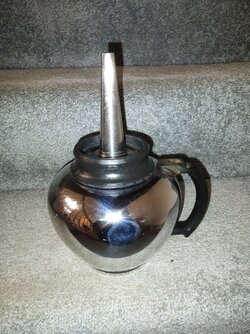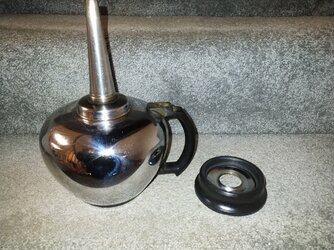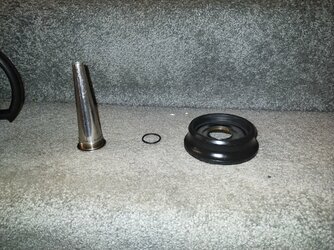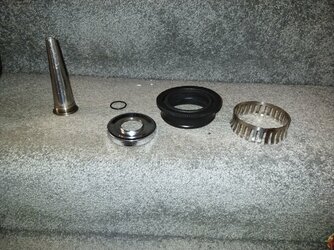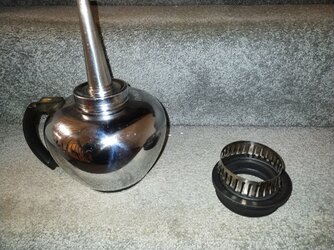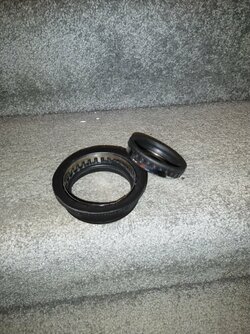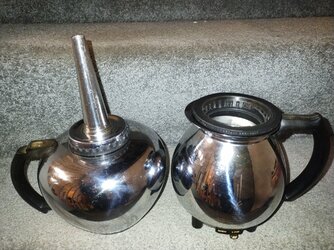Lads 'n' Lasses...
I've been thinking about a siphon pot. Mostly what I've been thinking, of course is along the lines of "They want how much for that?"
For some odd reason the old Sunbeam siphon pots have caught my attention. Might be because after 70 years they're still working, for the most part. Before I go haring off after one on the Great Internet Bizarre Bazaar I want to do some research. (Really, for me learning stuff is the point.)
So. One thing I see all over is that the old rubber gaskets in the C30 and C50 have probably all gone to Gasket Heaven by now. A few years ago there was some guy who was custom-making seals (dayseal.com) but he seems no longer to be around. In all this talk I have not seen what an actual Sunbeam gasket looks like, so I can start thinking about whether it's worth trying to come up with some modern replacement in silicone.
If anyone has one in working condition I am interested in seeing some good pictures of that gasket. If you've found a serviceable replacement, or can pass along some tips for making one or having one made, I appreciate the help.
I'd also like some informed advice on long-term care and maintenance. I imagine the heating element is essentially eternal (except when it's not ). Cords I can make. Filters I can make. I may even be good enough to make a gasket. But all the parts have to be there!
). Cords I can make. Filters I can make. I may even be good enough to make a gasket. But all the parts have to be there!
Thanks for any help that comes along.
O.H.
I've been thinking about a siphon pot. Mostly what I've been thinking, of course is along the lines of "They want how much for that?"
For some odd reason the old Sunbeam siphon pots have caught my attention. Might be because after 70 years they're still working, for the most part. Before I go haring off after one on the Great Internet Bizarre Bazaar I want to do some research. (Really, for me learning stuff is the point.)
So. One thing I see all over is that the old rubber gaskets in the C30 and C50 have probably all gone to Gasket Heaven by now. A few years ago there was some guy who was custom-making seals (dayseal.com) but he seems no longer to be around. In all this talk I have not seen what an actual Sunbeam gasket looks like, so I can start thinking about whether it's worth trying to come up with some modern replacement in silicone.
If anyone has one in working condition I am interested in seeing some good pictures of that gasket. If you've found a serviceable replacement, or can pass along some tips for making one or having one made, I appreciate the help.
I'd also like some informed advice on long-term care and maintenance. I imagine the heating element is essentially eternal (except when it's not
Thanks for any help that comes along.
O.H.

